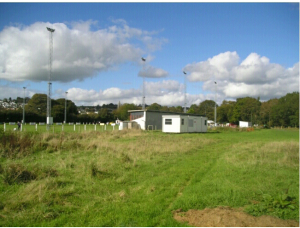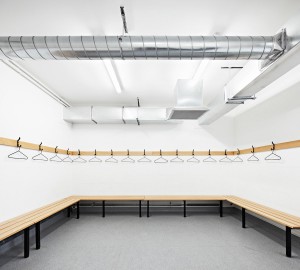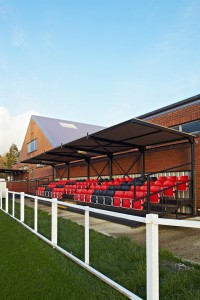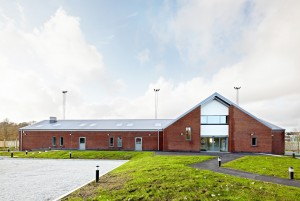Policy changes to accessible housing standards across England ‘optional’
Important policy changes to accessible housing standards across England came into force on 1 October 2015.
While the new accessibility standards will be included into the Building Regulations, there are concerns about adoption as the government’s new standards are optional.
In effect to comply with the new regulations, a housing provider need do nothing more than comply with the old ‘Part M’. This seems very short-sighted, as there is a lot to be gained from creating homes that are more accessible to all.
Housing Association Habinteg specialise in the provision of wheelchair accessible homes and have written a briefing document for the Housing LIN giving seven points about the latest standards.
This briefing makes the case for an increase in accessible housing, with an approach that acknowledges the benefits and savings available when building to higher access standards.
Some of the suggested benefits include reducing the number of accidents in the home, reducing the time required in hospital and enabling people to live in their own homes for as long as possible, without having to be moved into residential care.
According to Habint eg, one week in a residential care home can cost up to £550, yet increasing the specification of a home to meet Lifetime Homes standards would likely more than offset this cost.
eg, one week in a residential care home can cost up to £550, yet increasing the specification of a home to meet Lifetime Homes standards would likely more than offset this cost.
There are calls to make it mandatory to provide homes to the new Category 2 (Lifetime Homes similar), something that would appear to be common sense when overall costs and actual value are taken into consideration.
At Living Space Architects we endeavour to design all our projects to Lifetime Homes standards. We believe it not only benefits older people and those with disabilities, but also creates homes that are better for all of us to live in. This can give improvements not only for health, but overall well-being and enjoyment of life.
We hope that the government will be brave enough to review the standards, so that we have support in giving clients the best design solutions and providing long term improvements for communities.
Read Habintegs briefing for Housing LIN here: www.housinglin.org.uk/Design
Published in Real Homes Magazine
Our beautiful house extension and refurbishment project in Grey Wings, Cornwall has been featured in the ‘Design Guide’ for Real Homes Magazine under ‘Sustainable Style’.
This was a wonderful project to be part of, and we worked with obsessive detail to make the property the best it could possibly be.
The result was a highly sustainable and innovative design, embraced the stunning views and location of the property in a contemporary, stylistic manner.
To read more about the design, and see more pictures of this impressive extension, click here.
We have moved to a new office!
Having outgrown our office in the Senate we have now moved to 18 Southernhay West where we have a lovely new studio and Interior designer Hannah Martin is helping us with our fit out.
Living Space Architects was established in 2004 in Plymouth with the aim of creating vibrant contemporary architecture that is appropriate for its site, its history and its environment. We relocated to Exeter in 2010 and have continued to grow. After 4 years in the Forsyth Centre in the Senate we finally outgrew the space and wanted to find a new office better suited to the way we work. Our new office is on the 2nd floor of one of the beautiful terraces on Southernhay and we now have views of the garden and the Cathedral to inspire us.
The team at Living Space Architects hope you will have a chance to visit us soon.
18 Southernhay West, Exeter, EX1 1PJ. Telephone : 01392 270420

Grassroots Football
Investing in youngsters
As you read the latest football news, it notes radical proposals for the restructuring of English football in the report of the FA commission. This is an important issue for us “If Football Association chairman Greg Dyke’s Commission really wants to study why fewer English youngsters are breaking through into the country’s top teams, it may want to consider the importance of the facilities on which the next generation of footballers depend”
In one of our recent projects at Tavistock Community Football Club, the principle aim has been to facilitate the development of essential football playing facilities and junior involvement for Tavistock and the surrounding areas of Devon.
We have created 12 new pitches with new ground levelling and grading works to encourage good natural drainage on the flat new playing fields.
The pitches redevelopment project remodelled the end of the swale to allow water to exit the field and to retain the features of the floodplain of the local area. Previously rainfall had run off the compacted plateau into the central swale and collected a considerable depth, causing a bund of soil at the end of the swale preventing escape.
The new Tavistock Community Football Club building creates a building that is easy to find your way around and allows the children to be easily monitored and controlled. Issues of child protection are very important in a scheme of this kind and the changing facilities have been developed in line with current Football Foundation guidelines to ensure the children’s safety, especially on days where the building is used by both the CRA and TFC.
As well as providing safe areas, by creating communal facilities and a combined entrance, the scheme encourages more integration between the clubs and the opportunity for junior players to feel they are part of an organisation, where they can progress to a higher level in the game as they develop. Communal facilities at first floor create areas for coaching and for new members evenings. They also create spaces where both clubs can come together for social events, something that is currently not possible, as the existing TFC Black and Red Club is a licensed facility and therefore not open to children.
A community room was provided giving the overall importance of this complex for football senior/junior coaching; social events; committee meetings; fund raising events. Its prime use is for football development in the area – however more widely it is able to house community and business functions as a whole to provide an income stream for football development.
Electric Car for Living Space Architects
 After deciding we should be practicing what we preach we now have a new electric company car.
After deciding we should be practicing what we preach we now have a new electric company car.
We decided to purchase a Nissan Leaf which has a range of around 100 miles, but this does depend on how many hills you drive up. Thankfully the regenerative breaking helps restore the range on the way back down!
Office to become new homes
After an announcement made by the government Permitted development rights look likely to be extended to include the conversion of parts of certain offices and shops to two residential flats. There will still be exceptions as local authorities can remove permitted development rights where they think they may cause a problem – for example in conservation areas.
Under the 1995 Order, local authorities can remove permitted development rights in geographic areas where they think these new rights might cause a problem. They can do so by making an Article 4 direction, the effect of which is to a require a planning application which in other locations would not be necessary. Article 4 directions are commonly found in conservation areas.
Announcing the proposed changes Mr Pickles said:
“These are common sense planning reforms that will deliver more affordable homes in areas where there are good transport links whilst ensuring better use of existing developed land. Cutting this red tape should be a shot in the arm for the high street increasing footfall and providing a boost to regeneration.”
We look forward to finding out if the new permitted development rights will be as revolutionary as Mr Pickles hopes when they are brought into force in October.
Living Space Architects join Regen South West
After exhibiting at the Renewable Energy Marketplace a few months ago, we decided to join Regen South West this month. Regen SW has an expert team working to enable business, local authorities and other organisations to deliver renewable energy and energy efficiency and build a prosperous low-carbon economy in the south west.
Regen SW will be working with us to expand our knowledge and expertise within the renewable energy sector so that we can help our clients make the most of the opportunities offered by the Green Deal and other Government incentives.
We will also be looking at the opportunities offered by Communities for Renewables, a not for profit company set up by Regen SW to help communities start projects to generate their own power. This is of special interest to us as we frequently work communities, such as Newtown in Exeter, who are in the process of building a new community centre which includes a photovoltaic array.
We are looking forward to working with further community groups in this setor, so if you have a project that you need some help with in Devon, Somerset or Exeter give us a call or come in for a chat.
The requirement for home improvement energy efficient upgrades is scrapped by the Government
The Government has scrapped plans for what was dubbed a ‘conservatory tax’ that would have required homeowners to install additional – and potentially expensive – energy efficiency measures when making home improvements.
Part of the complicated proposals under the England and Wales Building Regulations: Part L 2013 Consultation – ‘consequential improvements’ have been part of the Government’s agenda for many years.
This time, as in 2006 and 2010, it seems it has folded to pressure. Rupert Scott, TRADA’s Membership and Marketing Manager, is not surprised. “If someone is having their windows replaced for example, should they really have to pay to have further energy efficiency measures undertaken, when they are already doing this with the windows?”
He said the key issue for industry is whether the plans would to create more work for construction. “There will be some who are dissuaded from upgrading their windows altogether – and in this scenario everyone loses,” he said.
Another key point of the consultation – as summarised in the latest TRADA Construction Briefings document – is that the overall CO² maximum design targets have been watered down from what was expected for 2013: for dwellings, the Government’s suggested position is a reduction of the 2010 CO² target by 8%.
“This is not much of mid-way bridge between the 2010 requirements and the goal of ‘zero carbon’ in 2016,” says Mr Scott. “The main issue is that all changes to building regulation guidance have to be appraised for their economic impact. The bottom line is that as we increase the energy performance levels it becomes increasingly difficult to make the financial case.
“The performance standards are not that onerous but the way the Government is proposing to ask people to comply is. It needs to get much simpler.”
TRADA Construction Briefing
What is the Green Deal?
The Energy Bill includes provision for a new “Green Deal” which the Government believe will revolutionise the energy efficiency of British properties. Put simply, the Government is establishing a framework to enable private firms to offer consumers energy efficiency improvements to their homes, community spaces and businesses at no upfront cost, and recoup payments through a charge in instalments on the energy bill.
At the heart of the Government’s proposals is the “Green Deal plan”, an innovative financing mechanism which allows consumers to pay back through their energy bills. This means consumers can see the Green Deal charge alongside the reductions in energy use which generate savings on their bill. It also means that if they move out and cease to be the bill-payer at that property, the financial obligation doesn’t move with them but moves to the next bill payer: the charge is only paid whilst the benefits are enjoyed. In this way, the Green Deal differs from existing lending – it is not a conventional loan since the bill-payer is not liable for the full capital cost of the measures, only the charges due whilst they are the bill-payer.
This is a market mechanism, funded by private capital, which the Government believe will deliver far more to consumers than any sort of top-down Government programme.
The role of the Green Deal provider is to offer a Green Deal plan to customers, which enables them to finance work recommended by an accredited adviser and undertaken by an accredited installer. These functions might be done in-house by the provider, or shared amongst other organisations, but the customer’s contractual relationship is with provider.
The Government’s proposals are centred on the Green Deal plan but are also more ambitious. For example, they are looking at how best to use the accredited, objective advice which is required in advance of the plan to give consumers a wider range of information about steps they can take to improve the sustainability of their homes, such as water efficiency.
There are a number of important consumer protections which will be embedded into the Green Deal which are detailed in the document. These include the following prerequisites for all Green Deal plans:
1. The expected financial savings must be equal to or greater than the costs attached to the energy bill, known as “the golden rule” of the Green Deal.
2. The measures must be approved and the claimed bill savings must be those accredited through this process.
3. The measures installed must have been recommended for that property by an accredited, objective adviser who has carried out an assessment.
4. The measures must be installed by an accredited installer.
5. For householders, the Green Deal provider must give appropriate advice within the terms of the Consumer Credit Act and take account of the individual circumstances of the applicant.
6. The Green Deal provider must have consent from the relevant parties, including the express consent of the current energy bill-payer.
7. The presence of a Green Deal must be properly disclosed to subsequent billpayers (e.g. new owners or tenants) alongside energy performance information.
8. Energy suppliers must collect the Green Deal charge and pass it on within the existing regulatory safeguards for collecting energy bill payments – including protections for vulnerable consumers.
To qualify for the Green Deal, expected savings in typical properties consuming a normal amount of energy must be equal to or greater than the cost of the measure. However, actual cash savings cannot be guaranteed by government since no-one except individuals and businesses themselves can control how much energy they actually consume in their own property. Whilst the consumer has ultimate responsibility for reducing consumption after the Green Deal measures have been installed, we will give energy users advice on how to change behaviour to maximise the benefits of better insulated, less wasteful properties.
Not every household will be able to save on their energy bills by taking up a Green Deal plan, so there will be additional help for those who need it most. Lower income and vulnerable households may not save money through energy efficiency because many do not have the heating turned on long enough to heat their homes sufficiently, so increased efficiency may mean they will enjoy warmer homes rather than cash savings. Likewise, homes which can only be made energy efficient through major measures which are currently more expensive will need additional support to bring down costs enough to meet the golden rule. Alongside the Green Deal, the Government is planning to replace the existing energy company obligations. The new Energy Company Obligation (ECO) will focus energy companies on improving the ability of the vulnerable and those on lower incomes to heat their homes affordably, and on improving solid wall properties, which have not benefited much from previous schemes.
The Government are designing the Green Deal with the aim of making it available for businesses as well as households – enabling smaller businesses to access funding for energy efficiency improvements, and larger businesses to meet their obligations under existing schemes at lower cost, such as Climate Change Agreements or the Carbon Reduction Commitment Energy Efficiency Scheme. The complexity of energy use in the business sector means that there will be a number of differences in the Green Deal for this sector, though the key principles set out here will apply to both businesses and households.
For further information visit the website for the department of Energy and Climate Change at www.decc.gov.uk












